Events
| Name | organizer | Where |
|---|---|---|
| MBCC “Doing Business with Mongolia seminar and Christmas Receptiom” Dec 10. 2025 London UK | MBCCI | London UK Goodman LLC |
NEWS
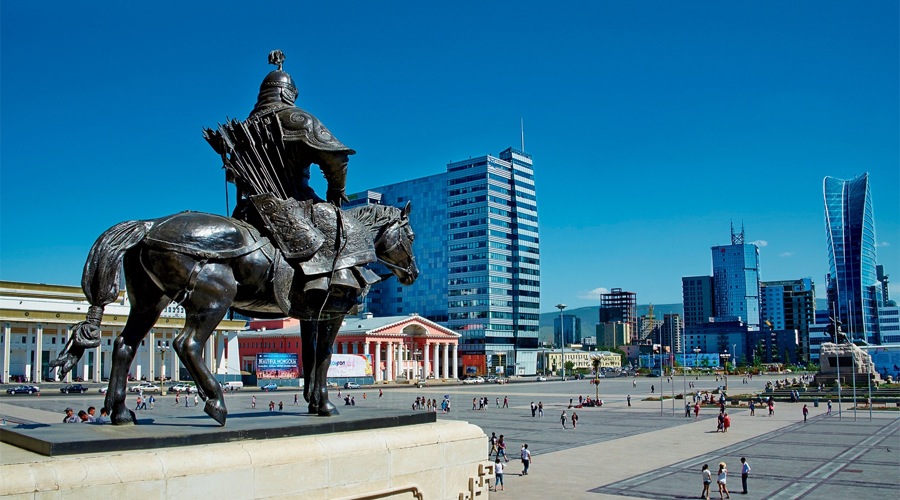
Mongolia: A gradual macroeconomic improvement drives an upgrade in the MLT political risk to 6/7 www.credendo.com
Mongolia has been on a bumpy road since spring 2017, when it was bailed out by multilateral and bilateral creditors to avoid a sovereign debt default. During the following years, while the authorities strived to reduce the country’s heavy debt burden, the economy was hit hard by the Covid-19 pandemic due to the border closure with China, its top export market (accounting for more than 80% of Mongolian goods exports). However, since 2021, the country has gradually seen its macroeconomic performances improve and now seems to have turned the corner. Real GDP growth is back to sustained high rates, recording a 6% average across 2022-24, a rate which is also forecast for the next three years. The economy remains highly reliant on the mineral commodity sector (coal, copper, gold and iron ore) as the main growth driver, although this is also a major weakness as it means that Mongolia is dependent on price fluctuations – this risk is mitigated by high prices for gold, huge market potential for copper in the green transition and rising demand for critical minerals from neighbouring China. Moreover, the large mining production expansion – after the launch of the huge Oyu Tolgoi mine in 2023, one of the world’s largest copper and gold mines – will be a valuable buffer in making Mongolia more resilient to future commodity demand and price fluctuations. The government also wants to boost economic diversification, notably by developing the country’s high tourism potential and untapping huge renewable potential (such as hydropower and solar) to reduce external energy dependency. These current and future mining and energy projects will boost exports and GDP growth in the MLT, thereby keeping the current account deficit at more acceptable levels. The deficit is much lower than its pre-Covid level, having halved from 16% to an expected 8% of GDP between 2019 and 2024, although a slow, gradual widening is forecast in the future. That said, FDI is expected to remain high and therefore finance the current account deficit in the MLT. Foreign exchange reserves are therefore likely to remain around an adequate level of three months of import cover.
A sharply squeezed public debt alleviates the heavy external debt burden
Stronger GDP and exports growth, combined with contained new borrowing, have contributed to reducing the heavy external debt ratios, resulting in a reduction in the external debt-to-GDP ratio from 237% in 2016 to 169% in 2023 since Mongolia’s sovereign debt crisis. A gradual but limited increase is however expected from 2026. It is worth noting that most debt is private, and an important decline in external debt comes from the decrease in public debt. Meanwhile, fiscal consolidation has enabled a remarkable improvement in public finances as public debt has dropped from 77.8% of GDP in 2020 to an estimated level of less than 40% in 2024. The fiscal balance has been in surplus since 2021 (a small deficit is forecast in the MLT), with government revenue surging to more than 35% of GDP so that the public debt-to-revenue ratio now amounts to just 112% (compared to over 300% at the time of Mongolia’s debt crisis). Looking ahead, public debt sustainability is projected to weaken a fraction, but without endangering the successful achievements of recent years. Therefore, the concrete progress towards a more sustainable external public debt and an upbeat outlook for Mongolia’s mineral sector led to an upgrade in the MLT political risk category to 6/7 last December.
Global trade protectionism and deteriorating monetary conditions remain downside risks
While external debt service reached more than half of current account receipts between 2017 and 2023, it is expected to sit at a much lower level comparatively in the coming years, although future external debt repayments will be monitored closely since they are projected to be equal to the level of foreign exchange reserves. In this context, Mongolia should benefit from easing US interest rates and a largely stable tugrik close to its levels of two years ago – albeit partly resulting from the central bank interventions.
Nevertheless, improved market conditions and confidence in the country could be exposed to a global trade war led by Trump’s import tariff hikes which could harm the Chinese economy, fuel inflation pressures and compel a pause in the Fed’s easing rate cycle. A stronger US dollar is also a concern, given the ever-challenging debt service. These are important downside risks to watch this year and beyond in the light of Mongolia’s external debt, which is still high. Although inflation has eased away from double-digit figures since 2023 amid monetary tightening, it still rose to 9.6% in January 2025. Inflation is likely to persist at relatively high levels, a chronic feature for the deadlocked economy.
Political stability and geostrategic position
Mongolia’s currently favourable outlook is supported by heightened political stability. Already in control of the presidency, the victory of the ruling Mongolian People’s Party in the June 2024 elections strengthened prospects of cautious policy continuity and a preserved democratic system. Nonetheless, in spite of finalised negotiations with Rio Tinto regarding the Oyu Tolgoi mine, the authorities have yet to show long-term commitment to strengthening institutions, which have been volatile in the past, in order to maintain appeal for foreign investors in the LT. Moreover, the government will continue to face protests in the absence of progress in tackling structural problems such as the high cost of living, the lack of socioeconomic benefits from commodity extraction and air pollution.
Externally, Mongolia is expected to continue to reap benefits from its geostrategic and transit location between Russia and China (its dominant trade and investment partner), notably as part of the Belt and Road Initiative. The authorities are also committed to diversifying their trade and economic links with the West as they aim to mitigate the risks associated with economic reliance on two partners. However, looking ahead, a chaotic geopolitical environment could complicate the authorities’ attempts to navigate between Mongolia’s partners.
Analyst: Raphaël Cecchi – r.cecchi@credendo.com
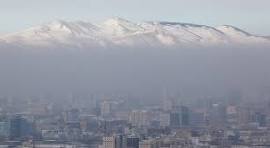
Government to Facilitate Households Residing in Insulated Gers and Passive Houses www.montsame.mn
Measures to reduce air pollution in Ulaanbaatar, the Capital City of Mongolia, will be implemented as a nationwide campaign involving all government administrative bodies and the public. Accordingly, Minister of Environment and Climate Change of Mongolia Odontuya Saldan announced that the Government of Mongolia will support households residing in insulated gers and passive houses.
During the regular session of the Cabinet of Mongolia on March 19, 2025, Minister of Finance of Mongolia Javkhlan Bold was instructed to focus on ensuring that commercial banks, particularly the State Bank of Mongolia, provide concessional loans.
The Scientific Advisory Board of the National Committee for Air Pollution Reduction of Mongolia received numerous proposals from individuals presenting their work. Among the initiatives presented, the most effective and adequate solutions will be assessed, and citizens will be offered various options and advice on insulating their homes.
The Ministry of Environment and Climate Change of Mongolia has officially notified 173 steam boilers and 2,263 enterprises that collectively burn 200,000 tons of raw coal annually that they must cease using raw coal starting September 1, 2025. To accelerate the plan of allocating 1 percent of corporate income tax revenue to air pollution reduction efforts, Minister Odontuya has scheduled meetings with enterprise leaders to discuss solutions for their employees residing in ger districts.
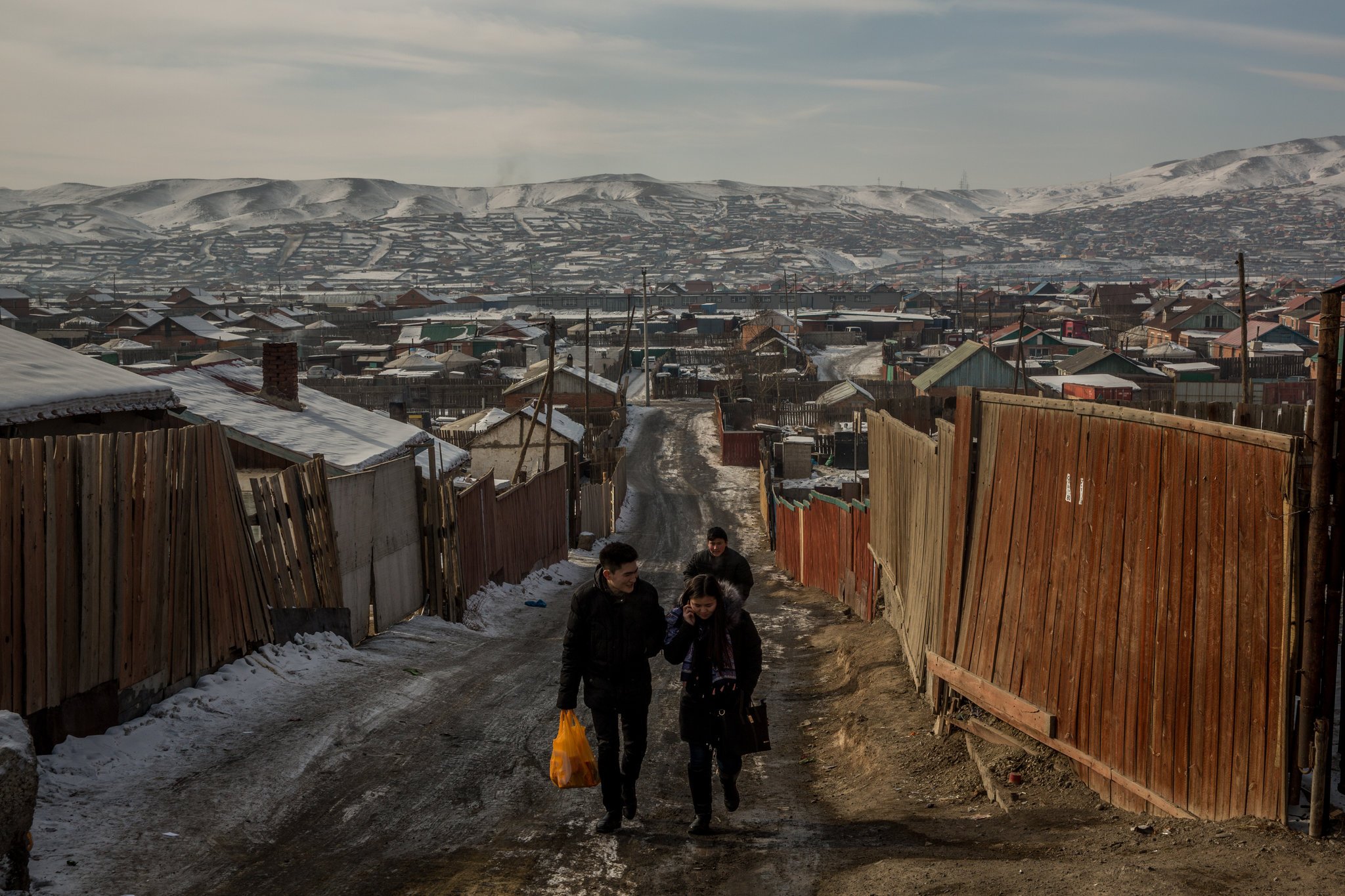
Government Approves Resolution to Help Thousands of Ulaanbaatar Households Switch to Gas Heating www.montsame.mn
During its regular session on March 19, 2025, the Cabinet of Mongolia approved a resolution to reduce air pollution in Ulaanbaatar City.
Governor of the Capital City of Mongolia Nyambaatar Khishgee noted, “More than 200,000 households in the capital use solid fuel. There are also 804,000 cars on the road. Sources such as power plants are also polluting the air. In this regard, a resolution has been approved to switch 32,000-50,000 households to gas in preparation for the winter of 2025-2026. If households voluntarily refuse solid fuel and switch to gas fuel, they will be provided with gas stoves for heating. Moreover, from September 15, 2025, to May 15, 2026, a subsidy of MNT100,000 will be provided to households that converted to gas. All ministries are responsible for reducing air pollution. Therefore, this resolution stipulates that ministries are responsible for reducing household heat loss in ger districts, each being assigned a certain area. Military organizations will also be involved in reducing the heat loss of households and bringing them into compliance with standards. State-owned companies will support this effort."
Annual gas consumption in Mongolia is 46 thousand tons. It is estimated that by switching 32-50 thousand households to gas, the consumption will increase to 100 thousand tons. The Governor of the Capital City said that a draft agreement on cooperation with gas-importing enterprises is being formulated.
...
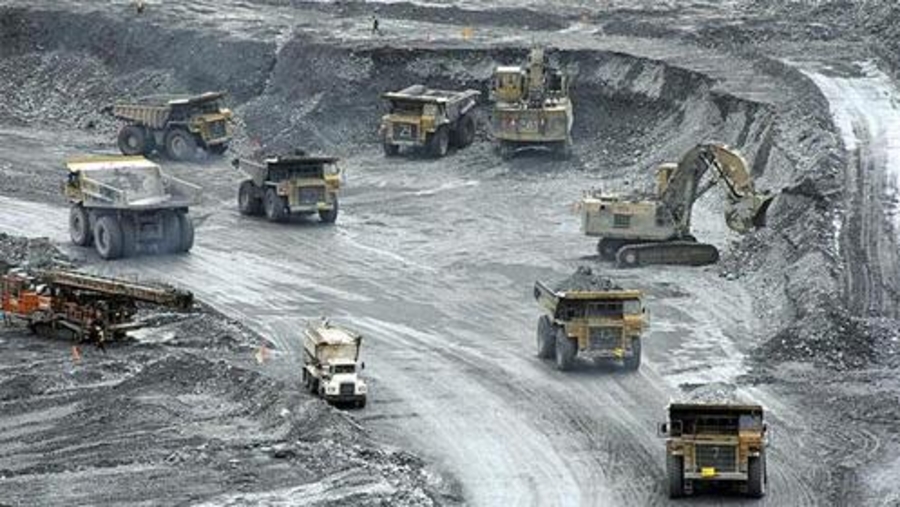
Industrial Output of Mongolia Reaches MNT 5.1 Trillion www.montsame.mn
According to preliminary results for the first two months of 2025, the total production of the industrial sector reached MNT 5.1 trillion, marking an increase of MNT 747.1 billion compared to the same period in 2024. This growth was mainly driven by the mining and extractive sector, which contributed MNT 492.9 billion, and the manufacturing sector, which accounted for MNT 129.5 billion.
The total production output of the mining and extractive sector reached MNT 3.5 trillion, an increase of MNT 492.9 billion from the same period in 2024. This growth was largely attributed to the extraction of metal ores, which rose by MNT 280.4 billion, and lignite mining, which increased by MNT 204.1 billion. The production volume of iron ore, lignite, zinc concentrate, copper concentrate (in metal content), fluorspar, and fluorspar concentrate increased by 4.1-92.3 percent compared to the same period in 2024. However, the production volume of iron ore concentrate, unrefined gold, processed coal, hard coal, crude oil, and silver concentrate declined by 0.1-13.6 percent.
In the manufacturing sector, the physical production volume of key products such as bottled water, soft drinks, juice, cashmere knitwear, combed cashmere, compressed coal briquettes, regular pastries, liquid milk, and cigarettes increased by 2.8-87.3 percent.
The industrial sector’s sales amounted to MNT 7.1 trillion, a decrease of MNT 971.8 billion compared to the same period in 2024. This was due to the decrease of MNT 1.3 trillion in the mining and extractive sector’s sales.
The total sales of products in the industrial sector amounted to MNT 7.1 trillion, representing a decrease of MNT 971.8 billion compared to the same period in 2024. This decline was mainly due to a MNT 1.3 trillion drop in sales within the mining and extractive sector.
The total sales of the mining and extractive sector fell by MNT 1.3 trillion from the previous year, primarily due to MNT 1.7 trillion decrease in coal sales and MNT 26.8 billion decline in crude oil sales.
As of the first two months of 2025, export sales amounted to MNT 4.8 trillion, with the mining and extractive sector accounting for MNT 4.7 trillion. The composition of mining exports was as follows:
Coal- 42.4 percent,
Metal ores- 52.7 percent,
Crude oil- 3.4 percent,
Other mineral extractions- 1.5 percent.
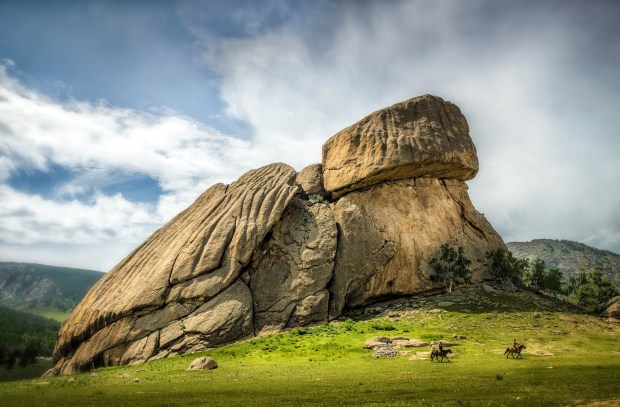
Promoting Sustainable Tourism in Mongolia: Insights from the Multi-stakeholder validation meeting www.unesco.org

Mongolia goes for megaprojects to broaden economy www.newsbase.com
Deep in Mongolia’s Gobi Desert, lines of trucks load up each day with coal and copper before travelling south to the Chinese border. Once over the frontier, factories and smelters turn Mongolia’s raw materials into finished projects.
The mining sector has served Mongolia well for nearly two decades but the country’s leaders are increasingly vocal about the amount of raw material exported to China. Some say it’s high time to keep some of that raw mineral wealth on Mongolian territory for processing.
To that end, officials have drawn up plans to expand Mongolia’s industrial capacity. Factories and infrastructure are in the planning stage to add value to raw materials. Officials say it’s in response to public demand.
“People are much more keen to see results. They also want to see their livelihoods being uplifted significantly,” said Bulgantuya Khurelbaatar, deputy speaker of the Ikh Khural and a member of the ruling Mongolian People’s Party (MPP). “This is only possible if we have significant, big projects. Megaprojects.”
If Prime Minister Oyun-Erdene Luvsannamsrai can get these factories built the result could be dramatic – sheets of copper and rolls of steel pouring across the border, instead of railcars filled with unprocessed minerals. Mongolia could position itself as a key player in global supply chains.
There are hurdles, of course. Questions over funding are somewhat hopeful as the projects will require billions of dollars in foreign investment. There are sustainability issues too. Mongolia is well-known for its natural beauty, wildlife and nomadic culture, all of which could be overwhelmed by rapid infrastructure development.
Despite the hurdles, officials say the projects are the quickest way to reach economic goals – chiefly a government promise to increase per capita GDP to $10,000, up from the current level of $7,580.
The prime minister has outlined 14 so-called megaprojects, including mineral processing centres, water diversion projects, dams and power plants.
The government has made significant inroads on two of them.
In January, Mongolia signed an agreement with France to develop a uranium mine in the southwest province of Dornogovi (East Gobi). Then in February officials completed a deal with China to develop a cross-border rail line at the Gashuunsukhait-Gants Mod crossing, where most of Mongolia’s coal crosses the border.
Both projects have been years in the making, spanning multiple administrations. Actual construction of the two projects will take years but moving them forward helps Oyun-Erdene build a case for more development.
A 450-megawatt coal-fired power station, planned for the coal-rich Tavan Tolgoi area, could be next to move forward. Mongolia has long sought ways to improve energy independence and wean itself from energy sources in Russia and China.
Oyun-Erdene is also prioritising more railways and cross-border rail links to support the country’s mining sector. Once these are in place, officials want factories capable of processing Mongolia’s mineral wealth. The list of megaprojects includes a steel manufacturing plant, a copper smelter and an oil refinery.
Politics plays a part
The timeline for these projects isn’t set in stone but they are being prioritised in the government’s 2024-2028 action plan.
To move them forward as quickly as possible the MPP formed a coalition government with the Democratic Party after the parliamentary elections last year. The MPP could have ruled by itself but wanted to remove barriers to development.
“When almost half the Parliament becomes an opposition, it's quite difficult to push forward for some of these big, megaprojects,” Bulgantuya said.
Forming a coalition helped Mongolia to wrap up the uranium deal with France. It could also make it easier for the government to move on projects that usually create friction in rural communities, including the damming of rivers for hydropower.
Projects include diverting water from north-flowing rivers like the Orkhon Gol to Southern Mongolia where it can be used for mining.
“Most of Mongolia’s rivers flow out [of Mongolia]. We are trying to keep a certain amount of those waters within our borders,” Minister of Mining Tuvaan Tsevegdorj said in an interview with bne IntelliNews. “That is the policy.”
Tuuvan says hydro and water diversion will be done in consultation with Russia and will be sustainable. The plan to divert water, for example, only applies to when it reaches flood stage, he said.
The government also says it will protect traditional nomadic culture, even as roads, railways and industrial sites appear on land normally used by herders. Nomads will still have access to millions of acres of unfenced land across the country, said Nomin Chinbat, Mongolia’s Minister of Tourism.
“We want to keep [the nomadic lifestyle] alive just as it has been for the last 2,000 years,” said Chinbat.
Hefty price tag
The total price tag for these projects will run far into the billions but officials say taxpayer money won’t be risked. Instead, private entities and foreign investors are being courted to pay for the projects.
The uranium mine, for instance, will be built with a $1.5bn investment by Orano of France. The 90-MW Erdeneburen hydropower power plant (HPP) is a $280mn project with full funding by Chinese investors. The planned oil refinery will be paid for with a $1.7bn investment from India.
Mongolia already has experience in courting large foreign investment. Anglo-Australian miner Rio Tinto paid for the massive Oyu Tolgoi copper mine, a $7bn investment. But it hasn’t been an easy marriage with Rio. Ulaanbaatar’s relationship with Rio and other foreign investors has been punctuated with holdups and disputes, and the slowing down or mothballing of projects.
Tuvaan, the mining minister, says rocky relationships with foreign investors are in the past. The current administration is better prepared for large-scale investments, he said. The Orano agreement with France is intended to chart a new path.
“We believe the Orano [uranium] project will bring a message to international investors that the Mongolian government is committed to foreign investment,” Tuvaan said. “We follow laws and regulations. We are committed to agreements, not changing our minds on the way.”
Mixed support
The megaproject plans have met with mixed opinions in Mongolia. Bulgantuya, the deputy parliament speaker, describes “a lot of kickback and lashback” when the project funding is discussed. Change is often met with hesitation, she said.
Recent history shows that the Mongolian public is wary of foreigners looking to exploit their country’s resources. Rio Tinto in particular struggled to gain public trust when Oyu Tolgoi was being built.
Some politicians have also expressed concern, even some within the ruling coalition. They include Jargalan Batbayar, a member of parliament representing the Democratic Party, who prefers a more balanced economy that is less reliant on the mining sector and more focused on cashmere and other agricultural products.
“I think we should stop thinking in terms of value-added supply chains, involving copper [and other minerals],” Jargalan said. “This only serves to lock us into an industrialisation path.”
Jargalan also doubts foreign investment will pay for it all and anticipates increased national debt. Some of the projects are little more than “white elephants” she says, indicating that there will be a high price to pay with little return.
“Quite costly and not economically viable,” Jargalan said. “They would only exponentially increase our foreign debt and exert undue pressure on the tughrik [local currency].”
Government officials appear open to hearing concerns but with three years before the next elections they are unlikely to be in a hurry to change course or slow down the plans to develop.
“We understand that there are varying voices,” said Bulgantuya. “But at the same time, these big projects support foreign and even domestic investment and still need to go ahead.”
By Michael Kohn

Mongolia to issue tenders for new railway to boost coking coal exports to China www.spglobal.com
Mongolia aims to open tenders by the end of March to start the construction of a second railway, which is expected to nearly double the transport of coking coal to China, the Mongolian government said March 17.
China and Mongolia signed the agreement Feb. 14 to establish a cross-border railway connecting Mongolia's Gashuun Sukhait port with China's Ganqimaodu port, dubbed the Gashuun Sukhait-Ganqimaodu port cross-border railway.
Ganqimaodu is a key port in the China-Mongolia coal trade.
"I am confident that the agreement will be ratified at the beginning of the spring session of the State Great Khural (Parliament), allowing for the timely commencement of construction work," Mongolian Prime Minister Luvsannamsrain Oyun-Erdene said as the session began March 17.
"After the agreement is ratified, contracts between the companies will be signed, and work will officially begin as specified in the agreement," he said, expecting to announce the first tenders by the end of March.
The new railway is anticipated to nearly double Mongolia's port capacity, increasing coal exports from an average of 83 million mt/year to 165 million mt/year, according to data from the Mongolian government. This expansion is expected to boost annual coal sales revenue by $1.5 billion. Government estimates indicate that the railway will take about 2 1/2 years to complete, with construction slated to begin in April 2025.
The Gashuun Sukhait-Ganqimaodu railway will complement the Tavantolgoi-Gashuun Sukhait rail link, which started up in September 2022.
Platts, part of S&P Global Commodity Insights, assessed premium low-vol hard coking coal $3/mt lower from the previous session at $171/mt FOB Australia on March 17. Premium low-vol CFR China was assessed $1/mt lower at $175/mt.
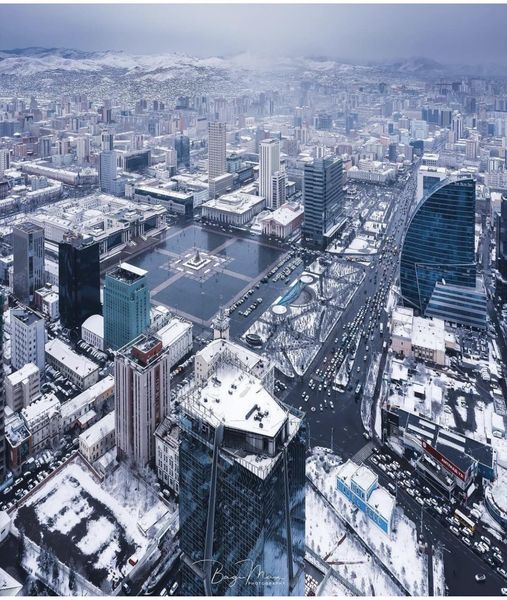
Non-performing loans hit 15-year low www.ubpost.mn
The end-2024 review of the banking sector was presented by the Mongolian Bankers Association and the Banking and Finance Academy on March 17, highlighting stable growth and improved financial indicators. The total assets of the banking sector increased by 23 percent compared to the same period last year, while non-performing loans declined. The upward trend in tugrug deposit yields, which began in early 2024, has also continued.
In particular, the quality of bank credit has significantly improved, with non-performing loans reaching their lowest level in the past 15 years. According to the latest financial review, the overall stability of the banking sector and the improving economic situation have contributed to this positive trend. Non-performing loans, which are classified as such when payments are overdue by more than 90 days, have declined across various economic sectors. The mining sector, in particular, has seen a sharp reduction in non-performing loans, with delinquent loans in this sector decreasing by half. The improved financial health of businesses and individuals has also helped maintain consumer loan quality at a stable level.
At the end of each year, the ratio of non-performing loans to citizens has shown a steady decline, reflecting stronger economic conditions and responsible lending practices. As Mongolia continues to experience growth in key industries, the downward trend in non-performing loans is expected to support overall financial stability.
Bank lending to key economic sectors has grown steadily, supporting business activity. Inflation remained relatively stable due to policy measures aimed at controlling price increases. However, demand-driven inflation began to rise in the second half of the year.
The balance of payments, including the financial account, was in surplus, leading to a significant increase in foreign exchange reserves. This helped stabilize the purchasing power of the tugrug. Despite rising budget revenues from increased mining exports, the state budget remained in deficit, impacted by the costs of two local elections and budget amendments. As a result, Mongolia now faces a dual deficit in both the state budget and the current account, posing a challenge to maintaining economic stability.
Economic growth reached 4.9 percent, driven mainly by the continued expansion of the mining, transport, logistics, services and trade sectors. However, unfavorable weather conditions led to a decline in the agricultural sector, negatively affecting overall economic growth.
Looking ahead, the country plans to maintain high economic growth by capitalizing on rising prices and increased output of mineral exports. The government has set ambitious targets for budget revenues and expenditures, with plans to boost spending on major development projects. Consumer lending also continued to rise, with banks primarily offering loans secured by salaries, pensions, and deposits. The recent increase in wages and pensions has contributed to the growing demand for personal loans.
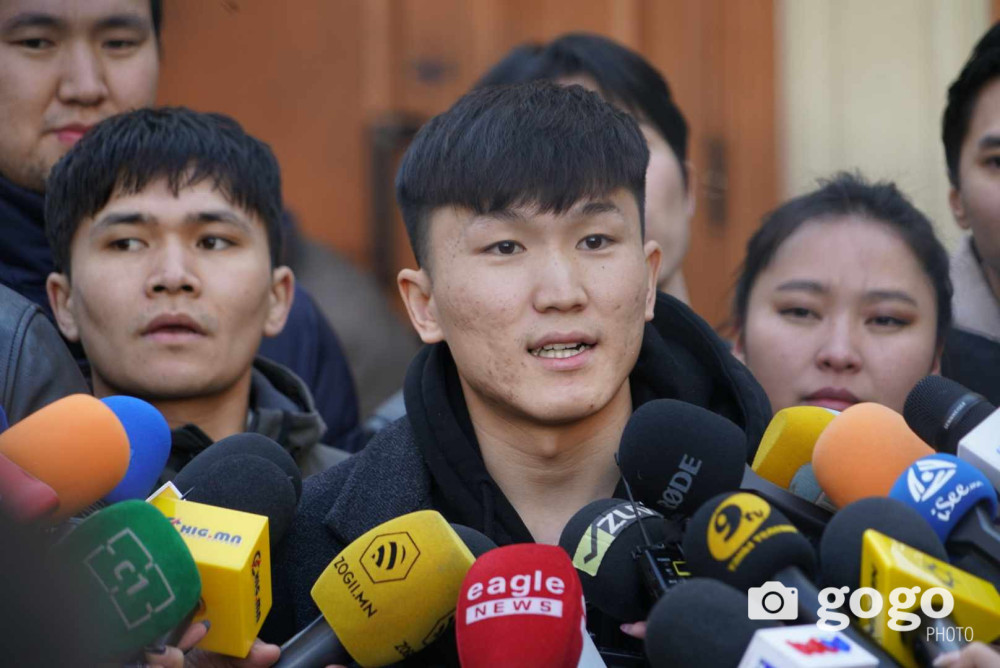
Raid on ‘Noorog’ media raises serious concern over press freedom www.ubpost.mn
Noorog Creative Studio was raided on March 17, with employees’ phones, hard drives and work computers confiscated. The sudden action disrupted the studio’s operations, making it impossible for employees to communicate. The raid and subsequent interrogation have raised serious concerns about press freedom in Mongolia. Many see the case as an effort to suppress independent media and discourage investigative reporting on the electoral process.
According to sources, the raid began at 10:05 p.m., during which statements were taken from employees. With all phones confiscated, no one was able to contact legal representation or colleagues. Employees were informed during the raid that they were under investigation for violating national unity under Article 19.9.1 of the Criminal Code. The article states, “Anyone who organizes acts that incite hostility, discord, separatism, discrimination, violence, restricts rights, or establishes privileges among people based on their race, ethnicity, language, skin color, religious beliefs, or ideology shall be punished with imprisonment for a term of five to twelve years. If this crime is committed by an organized criminal group, it will be punished with imprisonment for a term of twelve to twenty years.”
The Cyber Crimes Division of the Criminal Police Service has accused Noorog of “spreading false information on social media” through a Facebook page named Noorog. This investigation was reportedly initiated based on a complaint submitted via a fake address in a chat message, which claimed that Noorog’s content had caused individuals to consider suicide.Despite these allegations, the National Police Agency has refused to provide additional information regarding the case.
Meanwhile, the Noorog team held a press briefing on March 18. Noorog Media, operating under the slogan “Here is valuable, meaningful and useful content”, had recently completed a documentary film titled “18 Days”. The documentary aimed to invest in the political education of citizens by showcasing real events from the election, which was scheduled from June 10 to 28, 2024. The film followed five different characters over 18 days of the election campaign, capturing the political process from their perspectives.
O.Ulamsaikhan, founder of Noorog Creative Studio, revealed that two 14-terabyte hard drives containing the primary footage of the documentary were among the items seized during the raid. He voiced his concerns over the severity of the case, stating, “There is a history of cooperation between all the media groups in Mongolia, including MCS and APU, and taking pictures of them. So what are you trying to say? If we say cooperation, we did it. It was a business partnership. I see this process as an act of intimidation. I was surprised that a very strong criminal case was filed based on the complaint that came in. But we are not afraid. We did not intentionally attack or slander.”
“We talked about making a film, and soon this happened. The team called Noorog is a new young team. In the 18 days of the election, we followed six different characters in six regions. We followed ordinary citizens who were not party members. We showed the propaganda and the process that was coming to six people. We did it to show how elections are conducted in Mongolia.”
Lawyer B.Narantsetseg criticized the handling of the case, arguing that the application of Article 19.9 of the Criminal Code was unjustified. She noted that while previous cases of this nature were based on complaints from high-ranking officials, this one was initiated based on a citizen’s complaint, raising concerns about procedural fairness. P.Erkhembayar, another legal representative, claimed that investigators attempted to pressure the Noorog team into signing a non-disclosure agreement despite the absence of an official case.
Moreover, the State Prosecutor’s Office issued an official statement regarding the raid, clarifying the legal proceedings surrounding the case. It stated that after reviewing the investigator’s proposal to arrest the named citizens without a court order, the prosecutor determined that the legal grounds for detention had not been established and therefore refused the request for immediate arrest.
In response to these developments, the Press Institute and the Globe International Center issued statements condemning the actions taken against Noorog. They strongly opposed the intimidation, harassment and suppression of individuals and organizations exercising their rights to freedom of speech, expression and publication in Mongolia. The statement emphasized that the detention of the Noorog team members and the confiscation of their work equipment constitute serious violations of Mongolia’s international human rights obligations, specifically Article 19 of the International Covenant on Civil and Political Rights and Article 16 of the Mongolian Constitution, both of which protect the right to freedom of expression and publication. The organizations urged civil society, media institutions and international human rights organizations to closely monitor the situation in Mongolia and to remain vigilant in safeguarding freedom of expression.
The Nest Center, Center for Journalism Innovation and Development, has issued a statement strongly condemning the harassment of independent media organizations. It stated, "Noorog, a young editorial office, operates with professionalism, adhering to journalistic ethics and fulfilling its important role as the fourth estate in serving the public interest. We express our deep regret over the misuse of national unity to undermine press freedom. We firmly stand against this in the democratic Mongolia that respects human rights. In line with the UN Human Rights Committee's General Comment No. 34 on Freedom of Opinion and Expression, we stress that criminalizing media organizations, publishers, and journalists for merely criticizing the government, its policies, or political systems is not a legitimate or necessary restriction on freedom of expression."
"The practice of conducting interrogations outside of working hours is an unacceptable form of harassment and punitive action against the media. We officially express our opposition to such actions, which have unfortunately become increasingly common in Mongolia. We call for an end to these practices and for the protection of independent journalism in Mongolia," they wrote.
Additionally, Members of Parliament S.Erdenebold and S.Tsenguun addressed journalists regarding the detention and investigation. MP S.Erdenebold stated that young media professionals have the right to provide their production services to any business entity and questioned whether thorough checks had been conducted before legal action was taken. He further revealed that he had met with officials from the investigation office to seek clarification on the matter and learned that the investigation was proceeding with the approval of the Prosecutor’s Office. S.Tsenguun emphasized that the Human Rights Subcommittee will formally establish a working group to investigate the case, stating that this is not an isolated incident but part of a broader trend affecting democratic values in Mongolia. She warned that the hard-won democratic principles developed over the past 30 years are now under attack.
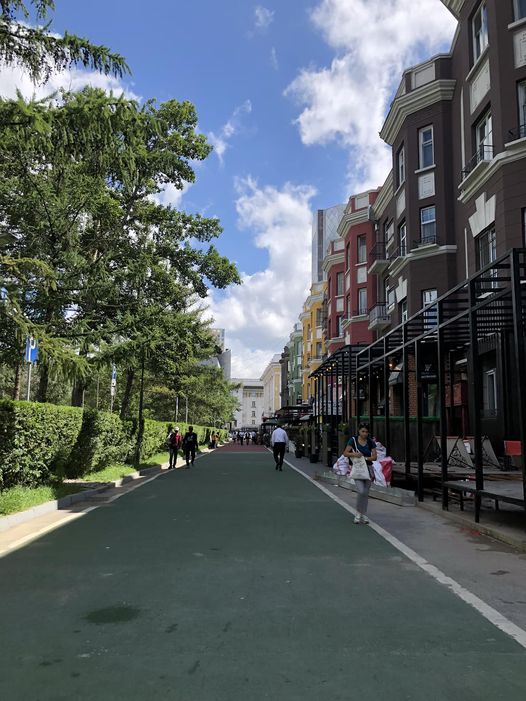
New Standards to Come into Effect in Ulaanbaatar This Autumn www.montsame.mn
The Citizens Representative Khural of the Capital City of Mongolia revised the city's standards to ensure a healthy, safe, and comfortable living environment for citizens, and 16 new standards will come into effect on October 1, 2025.
As of now, 38 standards approved in 2022 and 14 approved in 2023 are in effect.
Senior Specialist in Charge of Urban Standards at the Department of Urban Development and Urban Standards E. Gerelt-Od said, “Legal entities operating in the capital are obliged to comply with the general development plan of the city and urban standards, regardless of their form of ownership. According to the new regulation, “all local administrative organizations of the capital should work to ensure the implementation of urban standards.” Urban standards are implemented at four stages: planning, execution, acceptance, and utilization. For example, in the planning stage, the city standards are reflected in tender documents, from architectural planning to detailed drawings, and the standards are adhered to in the construction phase. We are working with relevant organizations in nine districts to obtain information on construction and other projects to be carried out with budget funds this year, and providing engineers and technicians of the contractor companies with methods for implementing urban standards.”
The new standards include:
-General hygiene and safety requirements of cemeteries
-Requirements for the protection of drinking water sources
-General requirements for wildlife-friendly fences in camping areas and state special protected areas
-Requirements for the creation of ponds, rainwater collection and reuse
-Requirements for the exteriors and interiors of general education school buildings
-Requirements for the exteriors and interiors of preschool educational institutions
-Standard design of energy-efficient residential buildings
-General requirements for the exteriors of children's summer camps
-Guidelines for planning public nursery rooms
-Requirements for insulation, exterior facades, and roofing of residential buildings
-General requirements for passenger lobbies at public transport stops/ stations
-General requirements for planning urban roads
-Requirements for the maintenance of roads and road facilities.
- «
- 1
- 2
- 3
- 4
- 5
- 6
- 7
- 8
- 9
- 10
- 11
- 12
- 13
- 14
- 15
- 16
- 17
- 18
- 19
- 20
- 21
- 22
- 23
- 24
- 25
- 26
- 27
- 28
- 29
- 30
- 31
- 32
- 33
- 34
- 35
- 36
- 37
- 38
- 39
- 40
- 41
- 42
- 43
- 44
- 45
- 46
- 47
- 48
- 49
- 50
- 51
- 52
- 53
- 54
- 55
- 56
- 57
- 58
- 59
- 60
- 61
- 62
- 63
- 64
- 65
- 66
- 67
- 68
- 69
- 70
- 71
- 72
- 73
- 74
- 75
- 76
- 77
- 78
- 79
- 80
- 81
- 82
- 83
- 84
- 85
- 86
- 87
- 88
- 89
- 90
- 91
- 92
- 93
- 94
- 95
- 96
- 97
- 98
- 99
- 100
- 101
- 102
- 103
- 104
- 105
- 106
- 107
- 108
- 109
- 110
- 111
- 112
- 113
- 114
- 115
- 116
- 117
- 118
- 119
- 120
- 121
- 122
- 123
- 124
- 125
- 126
- 127
- 128
- 129
- 130
- 131
- 132
- 133
- 134
- 135
- 136
- 137
- 138
- 139
- 140
- 141
- 142
- 143
- 144
- 145
- 146
- 147
- 148
- 149
- 150
- 151
- 152
- 153
- 154
- 155
- 156
- 157
- 158
- 159
- 160
- 161
- 162
- 163
- 164
- 165
- 166
- 167
- 168
- 169
- 170
- 171
- 172
- 173
- 174
- 175
- 176
- 177
- 178
- 179
- 180
- 181
- 182
- 183
- 184
- 185
- 186
- 187
- 188
- 189
- 190
- 191
- 192
- 193
- 194
- 195
- 196
- 197
- 198
- 199
- 200
- 201
- 202
- 203
- 204
- 205
- 206
- 207
- 208
- 209
- 210
- 211
- 212
- 213
- 214
- 215
- 216
- 217
- 218
- 219
- 220
- 221
- 222
- 223
- 224
- 225
- 226
- 227
- 228
- 229
- 230
- 231
- 232
- 233
- 234
- 235
- 236
- 237
- 238
- 239
- 240
- 241
- 242
- 243
- 244
- 245
- 246
- 247
- 248
- 249
- 250
- 251
- 252
- 253
- 254
- 255
- 256
- 257
- 258
- 259
- 260
- 261
- 262
- 263
- 264
- 265
- 266
- 267
- 268
- 269
- 270
- 271
- 272
- 273
- 274
- 275
- 276
- 277
- 278
- 279
- 280
- 281
- 282
- 283
- 284
- 285
- 286
- 287
- 288
- 289
- 290
- 291
- 292
- 293
- 294
- 295
- 296
- 297
- 298
- 299
- 300
- 301
- 302
- 303
- 304
- 305
- 306
- 307
- 308
- 309
- 310
- 311
- 312
- 313
- 314
- 315
- 316
- 317
- 318
- 319
- 320
- 321
- 322
- 323
- 324
- 325
- 326
- 327
- 328
- 329
- 330
- 331
- 332
- 333
- 334
- 335
- 336
- 337
- 338
- 339
- 340
- 341
- 342
- 343
- 344
- 345
- 346
- 347
- 348
- 349
- 350
- 351
- 352
- 353
- 354
- 355
- 356
- 357
- 358
- 359
- 360
- 361
- 362
- 363
- 364
- 365
- 366
- 367
- 368
- 369
- 370
- 371
- 372
- 373
- 374
- 375
- 376
- 377
- 378
- 379
- 380
- 381
- 382
- 383
- 384
- 385
- 386
- 387
- 388
- 389
- 390
- 391
- 392
- 393
- 394
- 395
- 396
- 397
- 398
- 399
- 400
- 401
- 402
- 403
- 404
- 405
- 406
- 407
- 408
- 409
- 410
- 411
- 412
- 413
- 414
- 415
- 416
- 417
- 418
- 419
- 420
- 421
- 422
- 423
- 424
- 425
- 426
- 427
- 428
- 429
- 430
- 431
- 432
- 433
- 434
- 435
- 436
- 437
- 438
- 439
- 440
- 441
- 442
- 443
- 444
- 445
- 446
- 447
- 448
- 449
- 450
- 451
- 452
- 453
- 454
- 455
- 456
- 457
- 458
- 459
- 460
- 461
- 462
- 463
- 464
- 465
- 466
- 467
- 468
- 469
- 470
- 471
- 472
- 473
- 474
- 475
- 476
- 477
- 478
- 479
- 480
- 481
- 482
- 483
- 484
- 485
- 486
- 487
- 488
- 489
- 490
- 491
- 492
- 493
- 494
- 495
- 496
- 497
- 498
- 499
- 500
- 501
- 502
- 503
- 504
- 505
- 506
- 507
- 508
- 509
- 510
- 511
- 512
- 513
- 514
- 515
- 516
- 517
- 518
- 519
- 520
- 521
- 522
- 523
- 524
- 525
- 526
- 527
- 528
- 529
- 530
- 531
- 532
- 533
- 534
- 535
- 536
- 537
- 538
- 539
- 540
- 541
- 542
- 543
- 544
- 545
- 546
- 547
- 548
- 549
- 550
- 551
- 552
- 553
- 554
- 555
- 556
- 557
- 558
- 559
- 560
- 561
- 562
- 563
- 564
- 565
- 566
- 567
- 568
- 569
- 570
- 571
- 572
- 573
- 574
- 575
- 576
- 577
- 578
- 579
- 580
- 581
- 582
- 583
- 584
- 585
- 586
- 587
- 588
- 589
- 590
- 591
- 592
- 593
- 594
- 595
- 596
- 597
- 598
- 599
- 600
- 601
- 602
- 603
- 604
- 605
- 606
- 607
- 608
- 609
- 610
- 611
- 612
- 613
- 614
- 615
- 616
- 617
- 618
- 619
- 620
- 621
- 622
- 623
- 624
- 625
- 626
- 627
- 628
- 629
- 630
- 631
- 632
- 633
- 634
- 635
- 636
- 637
- 638
- 639
- 640
- 641
- 642
- 643
- 644
- 645
- 646
- 647
- 648
- 649
- 650
- 651
- 652
- 653
- 654
- 655
- 656
- 657
- 658
- 659
- 660
- 661
- 662
- 663
- 664
- 665
- 666
- 667
- 668
- 669
- 670
- 671
- 672
- 673
- 674
- 675
- 676
- 677
- 678
- 679
- 680
- 681
- 682
- 683
- 684
- 685
- 686
- 687
- 688
- 689
- 690
- 691
- 692
- 693
- 694
- 695
- 696
- 697
- 698
- 699
- 700
- 701
- 702
- 703
- 704
- 705
- 706
- 707
- 708
- 709
- 710
- 711
- 712
- 713
- 714
- 715
- 716
- 717
- 718
- 719
- 720
- 721
- 722
- 723
- 724
- 725
- 726
- 727
- 728
- 729
- 730
- 731
- 732
- 733
- 734
- 735
- 736
- 737
- 738
- 739
- 740
- 741
- 742
- 743
- 744
- 745
- 746
- 747
- 748
- 749
- 750
- 751
- 752
- 753
- 754
- 755
- 756
- 757
- 758
- 759
- 760
- 761
- 762
- 763
- 764
- 765
- 766
- 767
- 768
- 769
- 770
- 771
- 772
- 773
- 774
- 775
- 776
- 777
- 778
- 779
- 780
- 781
- 782
- 783
- 784
- 785
- 786
- 787
- 788
- 789
- 790
- 791
- 792
- 793
- 794
- 795
- 796
- 797
- 798
- 799
- 800
- 801
- 802
- 803
- 804
- 805
- 806
- 807
- 808
- 809
- 810
- 811
- 812
- 813
- 814
- 815
- 816
- 817
- 818
- 819
- 820
- 821
- 822
- 823
- 824
- 825
- 826
- 827
- 828
- 829
- 830
- 831
- 832
- 833
- 834
- 835
- 836
- 837
- 838
- 839
- 840
- 841
- 842
- 843
- 844
- 845
- 846
- 847
- 848
- 849
- 850
- 851
- 852
- 853
- 854
- 855
- 856
- 857
- 858
- 859
- 860
- 861
- 862
- 863
- 864
- 865
- 866
- 867
- 868
- 869
- 870
- 871
- 872
- 873
- 874
- 875
- 876
- 877
- 878
- 879
- 880
- 881
- 882
- 883
- 884
- 885
- 886
- 887
- 888
- 889
- 890
- 891
- 892
- 893
- 894
- 895
- 896
- 897
- 898
- 899
- 900
- 901
- 902
- 903
- 904
- 905
- 906
- 907
- 908
- 909
- 910
- 911
- 912
- 913
- 914
- 915
- 916
- 917
- 918
- 919
- 920
- 921
- 922
- 923
- 924
- 925
- 926
- 927
- 928
- 929
- 930
- 931
- 932
- 933
- 934
- 935
- 936
- 937
- 938
- 939
- 940
- 941
- 942
- 943
- 944
- 945
- 946
- 947
- 948
- 949
- 950
- 951
- 952
- 953
- 954
- 955
- 956
- 957
- 958
- 959
- 960
- 961
- 962
- 963
- 964
- 965
- 966
- 967
- 968
- 969
- 970
- 971
- 972
- 973
- 974
- 975
- 976
- 977
- 978
- 979
- 980
- 981
- 982
- 983
- 984
- 985
- 986
- 987
- 988
- 989
- 990
- 991
- 992
- 993
- 994
- 995
- 996
- 997
- 998
- 999
- 1000
- 1001
- 1002
- 1003
- 1004
- 1005
- 1006
- 1007
- 1008
- 1009
- 1010
- 1011
- 1012
- 1013
- 1014
- 1015
- 1016
- 1017
- 1018
- 1019
- 1020
- 1021
- 1022
- 1023
- 1024
- 1025
- 1026
- 1027
- 1028
- 1029
- 1030
- 1031
- 1032
- 1033
- 1034
- 1035
- 1036
- 1037
- 1038
- 1039
- 1040
- 1041
- 1042
- 1043
- 1044
- 1045
- 1046
- 1047
- 1048
- 1049
- 1050
- 1051
- 1052
- 1053
- 1054
- 1055
- 1056
- 1057
- 1058
- 1059
- 1060
- 1061
- 1062
- 1063
- 1064
- 1065
- 1066
- 1067
- 1068
- 1069
- 1070
- 1071
- 1072
- 1073
- 1074
- 1075
- 1076
- 1077
- 1078
- 1079
- 1080
- 1081
- 1082
- 1083
- 1084
- 1085
- 1086
- 1087
- 1088
- 1089
- 1090
- 1091
- 1092
- 1093
- 1094
- 1095
- 1096
- 1097
- 1098
- 1099
- 1100
- 1101
- 1102
- 1103
- 1104
- 1105
- 1106
- 1107
- 1108
- 1109
- 1110
- 1111
- 1112
- 1113
- 1114
- 1115
- 1116
- 1117
- 1118
- 1119
- 1120
- 1121
- 1122
- 1123
- 1124
- 1125
- 1126
- 1127
- 1128
- 1129
- 1130
- 1131
- 1132
- 1133
- 1134
- 1135
- 1136
- 1137
- 1138
- 1139
- 1140
- 1141
- 1142
- 1143
- 1144
- 1145
- 1146
- 1147
- 1148
- 1149
- 1150
- 1151
- 1152
- 1153
- 1154
- 1155
- 1156
- 1157
- 1158
- 1159
- 1160
- 1161
- 1162
- 1163
- 1164
- 1165
- 1166
- 1167
- 1168
- 1169
- 1170
- 1171
- 1172
- 1173
- 1174
- 1175
- 1176
- 1177
- 1178
- 1179
- 1180
- 1181
- 1182
- 1183
- 1184
- 1185
- 1186
- 1187
- 1188
- 1189
- 1190
- 1191
- 1192
- 1193
- 1194
- 1195
- 1196
- 1197
- 1198
- 1199
- 1200
- 1201
- 1202
- 1203
- 1204
- 1205
- 1206
- 1207
- 1208
- 1209
- 1210
- 1211
- 1212
- 1213
- 1214
- 1215
- 1216
- 1217
- 1218
- 1219
- 1220
- 1221
- 1222
- 1223
- 1224
- 1225
- 1226
- 1227
- 1228
- 1229
- 1230
- 1231
- 1232
- 1233
- 1234
- 1235
- 1236
- 1237
- 1238
- 1239
- 1240
- 1241
- 1242
- 1243
- 1244
- 1245
- 1246
- 1247
- 1248
- 1249
- 1250
- 1251
- 1252
- 1253
- 1254
- 1255
- 1256
- 1257
- 1258
- 1259
- 1260
- 1261
- 1262
- 1263
- 1264
- 1265
- 1266
- 1267
- 1268
- 1269
- 1270
- 1271
- 1272
- 1273
- 1274
- 1275
- 1276
- 1277
- 1278
- 1279
- 1280
- 1281
- 1282
- 1283
- 1284
- 1285
- 1286
- 1287
- 1288
- 1289
- 1290
- 1291
- 1292
- 1293
- 1294
- 1295
- 1296
- 1297
- 1298
- 1299
- 1300
- 1301
- 1302
- 1303
- 1304
- 1305
- 1306
- 1307
- 1308
- 1309
- 1310
- 1311
- 1312
- 1313
- 1314
- 1315
- 1316
- 1317
- 1318
- 1319
- 1320
- 1321
- 1322
- 1323
- 1324
- 1325
- 1326
- 1327
- 1328
- 1329
- 1330
- 1331
- 1332
- 1333
- 1334
- 1335
- 1336
- 1337
- 1338
- 1339
- 1340
- 1341
- 1342
- 1343
- 1344
- 1345
- 1346
- 1347
- 1348
- 1349
- 1350
- 1351
- 1352
- 1353
- 1354
- 1355
- 1356
- 1357
- 1358
- 1359
- 1360
- 1361
- 1362
- 1363
- 1364
- 1365
- 1366
- 1367
- 1368
- 1369
- 1370
- 1371
- 1372
- 1373
- 1374
- 1375
- 1376
- 1377
- 1378
- 1379
- 1380
- 1381
- 1382
- 1383
- 1384
- 1385
- 1386
- 1387
- 1388
- 1389
- 1390
- 1391
- 1392
- 1393
- 1394
- 1395
- 1396
- 1397
- 1398
- 1399
- 1400
- 1401
- 1402
- 1403
- 1404
- 1405
- 1406
- 1407
- 1408
- 1409
- 1410
- 1411
- 1412
- 1413
- 1414
- 1415
- 1416
- 1417
- 1418
- 1419
- 1420
- 1421
- 1422
- 1423
- 1424
- 1425
- 1426
- 1427
- 1428
- 1429
- 1430
- 1431
- 1432
- 1433
- 1434
- 1435
- 1436
- 1437
- 1438
- 1439
- 1440
- 1441
- 1442
- 1443
- 1444
- 1445
- 1446
- 1447
- 1448
- 1449
- 1450
- 1451
- 1452
- 1453
- 1454
- 1455
- 1456
- 1457
- 1458
- 1459
- 1460
- 1461
- 1462
- 1463
- 1464
- 1465
- 1466
- 1467
- 1468
- 1469
- 1470
- 1471
- 1472
- 1473
- 1474
- 1475
- 1476
- 1477
- 1478
- 1479
- 1480
- 1481
- 1482
- 1483
- 1484
- 1485
- 1486
- 1487
- 1488
- 1489
- 1490
- 1491
- 1492
- 1493
- 1494
- 1495
- 1496
- 1497
- 1498
- 1499
- 1500
- 1501
- 1502
- 1503
- 1504
- 1505
- 1506
- 1507
- 1508
- 1509
- 1510
- 1511
- 1512
- 1513
- 1514
- 1515
- 1516
- 1517
- 1518
- 1519
- 1520
- 1521
- 1522
- 1523
- 1524
- 1525
- 1526
- 1527
- 1528
- 1529
- 1530
- 1531
- 1532
- 1533
- 1534
- 1535
- 1536
- 1537
- 1538
- 1539
- 1540
- 1541
- 1542
- 1543
- 1544
- 1545
- 1546
- 1547
- 1548
- 1549
- 1550
- 1551
- 1552
- 1553
- 1554
- 1555
- 1556
- 1557
- 1558
- 1559
- 1560
- 1561
- 1562
- 1563
- 1564
- 1565
- 1566
- 1567
- 1568
- 1569
- 1570
- 1571
- 1572
- 1573
- 1574
- 1575
- 1576
- 1577
- 1578
- 1579
- 1580
- 1581
- 1582
- 1583
- 1584
- 1585
- 1586
- 1587
- 1588
- 1589
- 1590
- 1591
- 1592
- 1593
- 1594
- 1595
- 1596
- 1597
- 1598
- 1599
- 1600
- 1601
- 1602
- 1603
- 1604
- 1605
- 1606
- 1607
- 1608
- 1609
- 1610
- 1611
- 1612
- 1613
- 1614
- 1615
- 1616
- 1617
- 1618
- 1619
- 1620
- 1621
- 1622
- 1623
- 1624
- 1625
- 1626
- 1627
- 1628
- 1629
- 1630
- 1631
- 1632
- 1633
- 1634
- 1635
- 1636
- 1637
- 1638
- 1639
- 1640
- 1641
- 1642
- 1643
- 1644
- 1645
- 1646
- 1647
- 1648
- 1649
- 1650
- 1651
- 1652
- 1653
- 1654
- 1655
- 1656
- 1657
- 1658
- 1659
- 1660
- 1661
- 1662
- 1663
- 1664
- 1665
- 1666
- 1667
- 1668
- 1669
- 1670
- 1671
- 1672
- 1673
- 1674
- 1675
- 1676
- 1677
- 1678
- 1679
- 1680
- 1681
- 1682
- 1683
- 1684
- 1685
- 1686
- 1687
- 1688
- 1689
- 1690
- 1691
- 1692
- 1693
- 1694
- »






